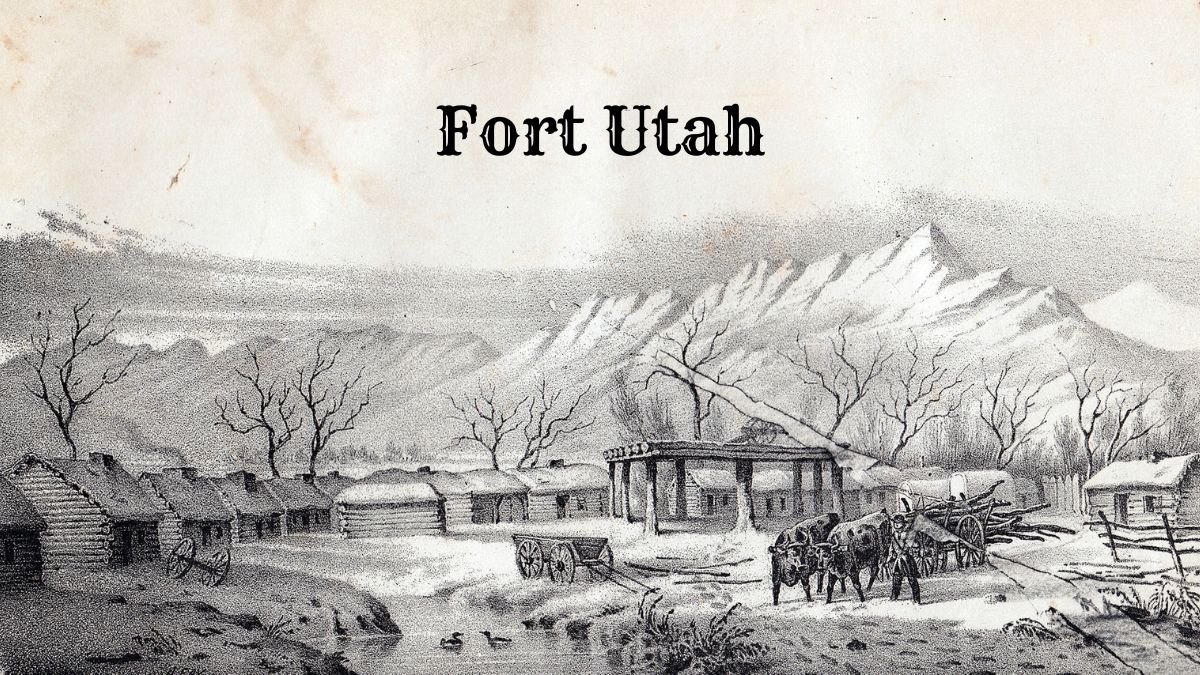Fort Utah, founded in 1849 by Mormon pioneers, played a significant role in the early history of Provo, Utah.
Located on the banks of the Provo River, the fort was established as a defense against hostilities and to create a new settlement in the Utah Valley.
It was a hub for trade, agriculture, and cooperation between settlers and indigenous tribes.
The fort’s remnants and history offer a window into the challenges and triumphs of frontier life in the mid-19th century.
Understanding Fort Utah requires recognizing its importance in the expansion and development of the surrounding region.
Its establishment marked the beginning of permanent settlements in Utah Valley, leading to the growth of Provo into the city it is today.
History of Fort Utah
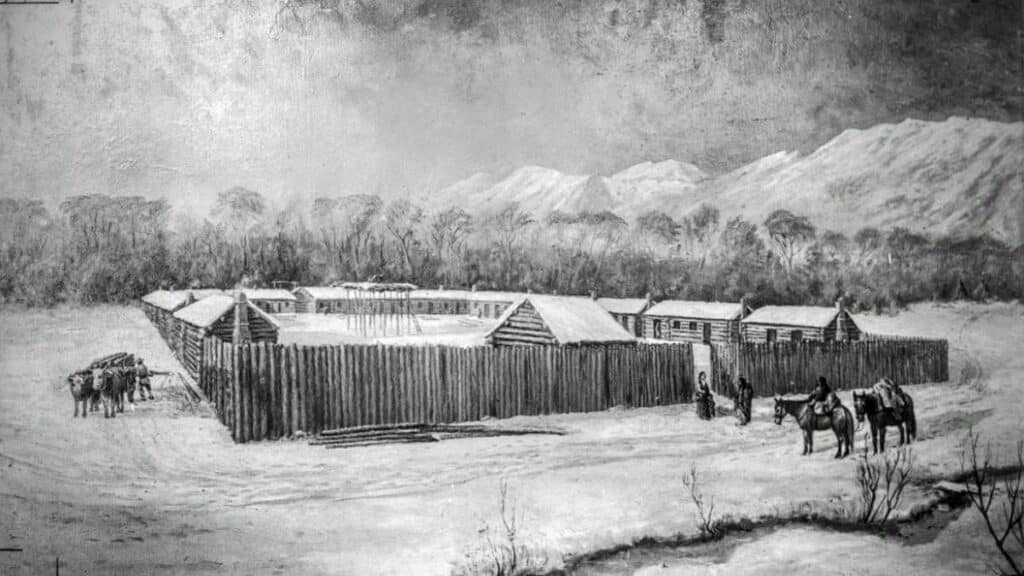
Fort Utah, located in Provo, Utah, has a significant past shaped by early settlers and interactions with the Ute people. Various conflicts, including the Walker War and the Battle of Fort Utah, played key roles in its history.
Early History of Fort Utah
In 1849, Mormon settlers established Fort Utah along the Provo River. They sought farmland and new homes, marking the beginning of European-American settlement in the region.
The area was initially a seasonal hunting ground for the Ute people. As settlers moved in, they constructed log cabins and a central fort for protection.
Despite initial peaceful interactions, tensions arose as resources became scarce, foreshadowing future conflicts.
Mormon Settlers and Indigenous Relations
Relations between Mormon settlers and the Ute people were initially diplomatic, involving trade and mutual support. However, increasing settler populations and resource pressures led to strife.
Mormon leaders attempted to negotiate peace and share resources. Yet, misunderstandings and competition over land and food sources spurred confrontations.
This period set the stage for significant battles and long-lasting impacts on both communities.
Military Engagements and Conflicts
Several key conflicts defined the military history of Fort Utah. The Battle of Fort Utah occurred in 1850, resulting in substantial casualties for the Ute people.
The Walker War (1853-1854) further strained relations, involving various skirmishes between settlers and Ute warriors. Both sides suffered heavy losses.
These confrontations highlighted the growing pains of settlement and the tragic clashes with indigenous populations, leaving a lasting imprint on the area’s history.
Geography Surrounding Fort Utah
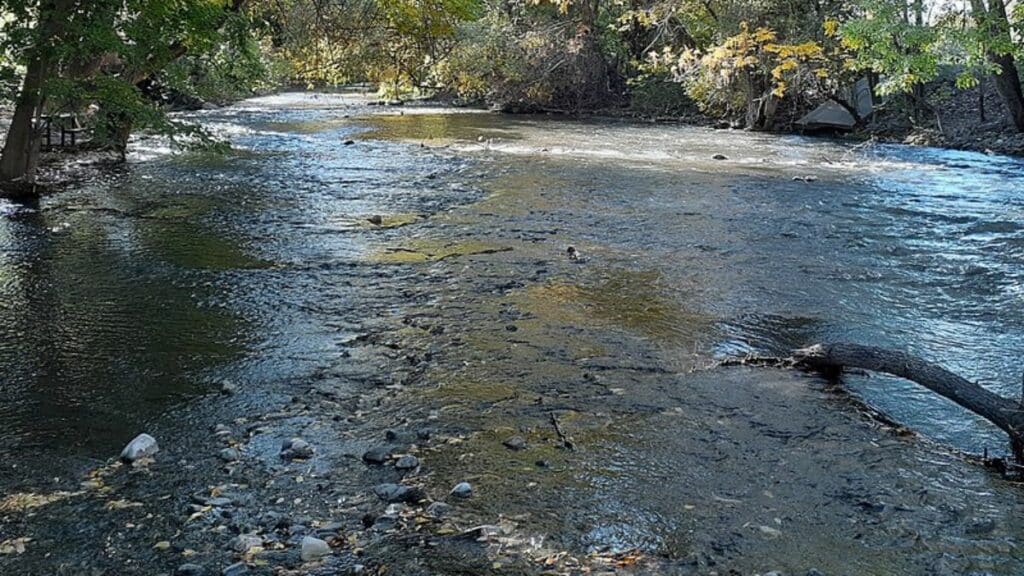
Fort Utah’s geographical status made it an essential location, influencing its layout and strategic importance.
Location and Layout
Fort Utah was established near the Provo River in what is now Provo, Utah.
The proximity to water provided settlers with necessary agriculture and daily living resources. The nearby river facilitated irrigation and a reliable water supply.
Additionally, its location was close to Salt Lake City, the administrative and cultural hub.
The layout of Fort Utah was designed to maximize the natural advantages of its setting.
Buildings and fields were arranged to make the most of the fertile land around the river.
Natural resources like timber and game were readily accessible, contributing to the settlement’s self-sufficiency.
Its location also meant that nearby mountains shielded it, offering protection and a natural defense against potential threats.
Strategic Importance
Fort Utah’s placement was not just about resources; it also had significant strategic value.
Located along key routes, it facilitated movement and communication between settlements. This was crucial for trade and supply lines, especially as the region developed.
The fort acted as a buffer zone between Native American tribes and other settlers, often playing a role in regional diplomacy and conflict resolution.
Its position helped secure the broader area, underpinning the safety and expansion of the settlers’ communities.
In essence, Fort Utah was more than just a settlement; it was a pivotal point in the growth and defense of the Utah region.
It balanced resource availability with strategic military and trade considerations, aiding in the area’s overall stability and development.
Fort Construction and Architecture
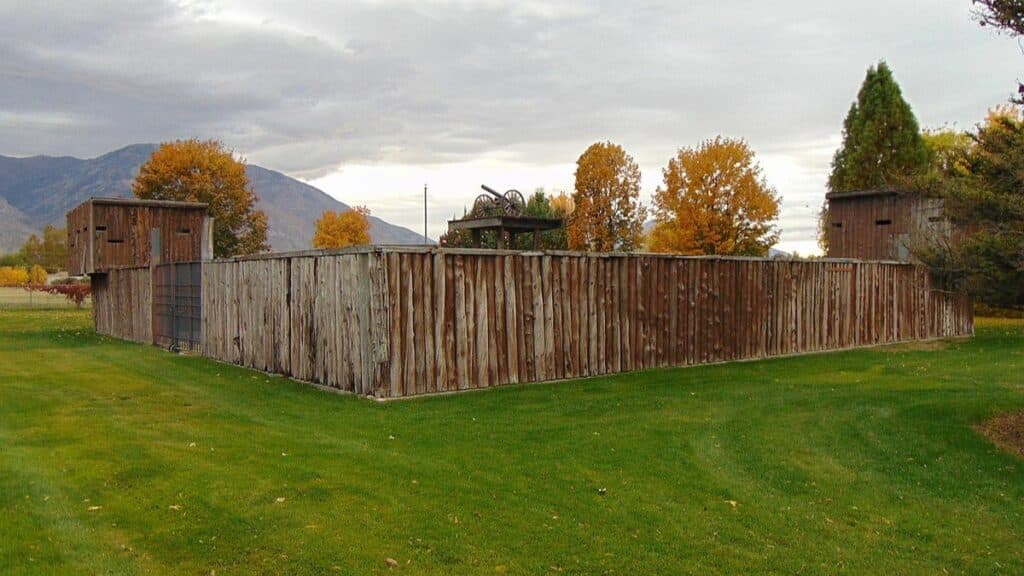
The fort’s construction included sturdy defensive structures and essential residential and communal buildings that served its inhabitants’ needs.
Defensive Structures
The fort’s primary defensive feature was the palisade, crafted from vertically placed logs. These logs were sharpened at the top to deter climbing and were closely aligned to form an unbroken wall.
Stockades surrounded the palisade, providing an additional layer of security.
They were constructed with two parallel rows of logs filled with earth. This reinforced the fort against potential breaches.
Guard towers were strategically placed at corners and gates to offer elevated watchpoints. This positioning allowed defenders to monitor approaching threats effectively.
Residential and Communal Buildings
Within the fort, log houses provided sturdy and insulated accommodation.
Each house was built using interlocking logs, ensuring durability and weather resistance.
Communal buildings included a meeting hall and a storage facility.
The meeting hall served as a place for gatherings and decision-making.
The storage facility, constructed similarly to the log houses, safeguarded provisions and essential supplies.
Communal gardens existed within the fort boundaries to provide fresh produce.
These gardens were maintained collectively and helped ensure a steady food supply.
Cultural and Societal Impact
Fort Utah played a multifaceted role in shaping local society and culture. This influence extended to neighboring communities, religious structures, and interactions with Native American tribes.
Fort Utah and Local Communities
Fort Utah was instrumental in establishing local communities. The fort supported settlers by providing a base for farming, trade, and protection.
The gatherings at the fort turned it into a central hub for communal activities and decision-making.
This led to the growth of small towns and villages around it. The fort’s presence provided a sense of security that encouraged families to settle and expand, fostering a cooperative spirit among the settlers.
Religious Influence
The Church of Jesus Christ of Latter-day Saints significantly influenced the fort.
Brigham Young played a key role in its establishment, and many settlers were members of the Mormon Church.
Religious teachings influenced daily life and community decisions at Fort Utah.
Church meetings and religious gatherings often took place at the fort, impacting the spiritual lives of the settlers.
The presence of the church established strong moral and ethical guidelines, which shaped societal norms and values in the region.
Relations with Native American Tribes
Relations between Fort Utah settlers and the Ute people were complex and often tense.
Initially, there was an attempt at peaceful coexistence and trade. However, conflicts eventually arose over resources and land, leading to several violent encounters.
Efforts by the settlers to convert Native Americans to Christianity added to the friction.
Despite these tensions, there were instances of cooperation and exchange, although the ensuing conflicts overshadowed these.
The interactions at Fort Utah marked a significant chapter in the broader narrative of settler and Native American relations.
Key Figures and Leadership
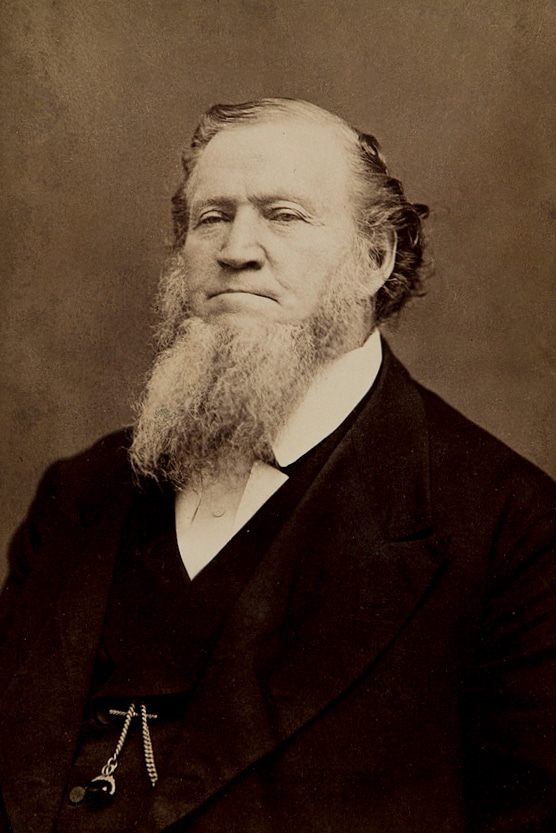
The leadership at Fort Utah played a crucial role in its establishment and operation. Two key focus areas include Brigham Young’s strategic guidance and the military commanders’ maintenance of order and defense.
Brigham Young’s Leadership
Brigham Young was instrumental in establishing Fort Utah. As the leader of the Latter-day Saint movement, he prioritized the settlement as part of his broader vision for expanding the territory.
He offered strategic direction and resource allocation, ensuring the settlers were adequately supported.
Under Young’s guidance, the fort’s construction and community governance were structured to enhance self-sufficiency and security.
His leadership extended to negotiating with local Native American tribes, aiming to maintain peace and facilitate mutual cooperation.
Brigham Young’s influence was also evident in selecting key personnel and forming policies that governed daily life at Fort Utah.
His decisions significantly impacted the success and sustainability of the settlement.
Military Commanders and their Roles
Military leadership at Fort Utah was crucial for its defense and order.
John S. Higbee was a prominent figure. He was in charge of the local militia. His responsibilities included organizing defenses, managing conflicts, and ensuring the fort’s readiness against potential threats.
Isaac Higbee also played a significant role as one of the primary military leaders.
He worked alongside John S. Higbee to oversee the militia’s training and operations.
Their leadership ensured a disciplined and prepared force within the fort.
These commanders coordinated their efforts to maintain security and implement strategies safeguarding the settlement.
Their roles extended beyond defense, contributing to the community’s stability and morale.
Their leadership was pivotal in Fort Utah’s day-to-day functioning and long-term resilience.
Explore More: 10 Historic Forts in Utah: A Journey Through Time
Economic Aspects
Fort Utah played a significant role in the region’s economy through trading and agricultural activities. Its strategic location facilitated commerce and the trading of various goods and livestock.
Trading and Commerce
Fort Utah’s trading post served as a crucial hub for commerce. Local settlers and Native American tribes exchanged fur, tools, and food supplies.
The trading post featured a system where goods were bartered, fostering relationships between different communities.
Fort Utah’s merchants procured essential items for settlers, including farming tools, household goods, and clothing.
The trading post also acted as a marketplace for selling locally produced items.
Agriculture and Livestock
Agriculture formed the cornerstone of Fort Utah’s economy.
Fertile lands surrounding the fort allowed settlers to cultivate wheat, barley, and corn.
Livestock farming was equally pivotal.
Settlers raised cattle, sheep, and horses, essential for farming operations and transportation.
These animals provided dairy, meat, and wool, contributing to self-sufficiency.
Summary Table
| Economic Activity | Key Elements |
|---|---|
| Trading Post | Fur, tools, food supplies |
| Agriculture | Wheat, barley, corn |
| Livestock | Cattle, sheep, horses |
Armed Conflicts and Battles
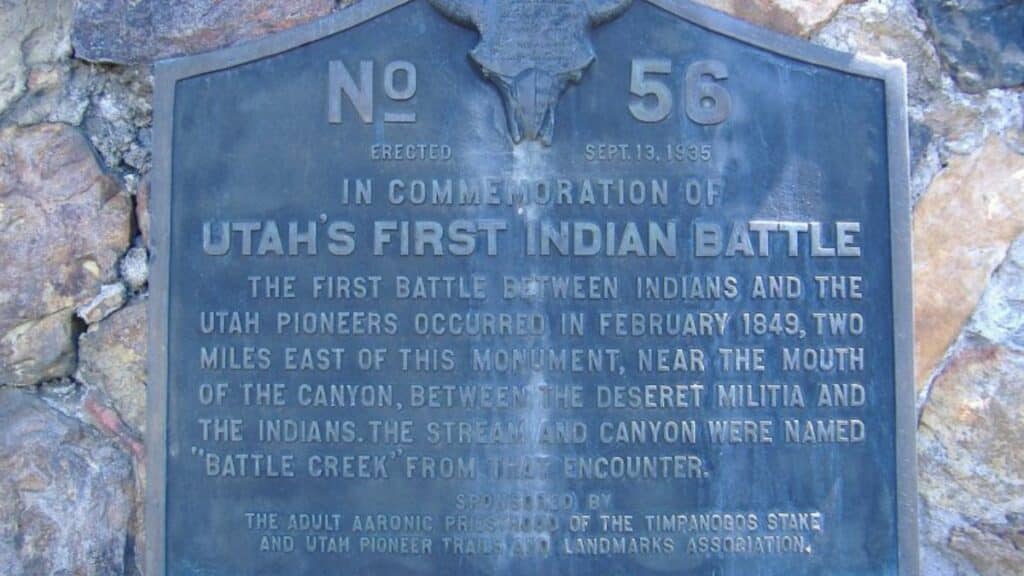
Fort Utah played a significant role in the early conflicts between settlers and native populations, notably during the Walker War and the Battle Creek Massacre.
The Walker War and Its Impact
The Walker War commenced in 1853 and continued until 1854. Led by Chief Walkara of the Ute tribe, the conflict started due to tensions over land encroachments and trade practices.
Despite attempts at negotiation, violent encounters became frequent.
The settlers organized militia forces to defend their holdings. Fort Utah served as a strategic point for these operations.
The conflict resulted in numerous casualties on both sides. It strained relationships and disrupted the daily lives of settlers and the Ute people.
The war eventually ended with an uneasy truce, but the underlying issues remained unresolved, leading to further hostilities in later years.
Skirmishes and the Battle Creek Massacre
A series of smaller skirmishes preceded the famous Battle Creek Massacre, which took place in 1849.
These skirmishes were marked by sporadic violence and escalating distrust between settlers and indigenous tribes.
The Battle Creek Massacre occurred near what is now known as Pleasant Grove, Utah.
A settler posse attacked a group of Ute Indians camped along the creek, resulting in the deaths of several Native American men and boys.
The motive behind the attack included the perceived threat of Ute activities in the area, and it was framed as a defensive measure.
This massacre further eroded trust and fueled future conflicts. The repercussions of this event were felt for years, influencing subsequent interactions between settlers and Native Americans in the region.
Archeological and Monumental Sites

Exploring Fort Utah’s archeological and monumental significance reveals valuable insights into its historic preservation efforts and memorialization.
Preservation of Fort Remains
Efforts to preserve Fort Utah’s remains have been significant.
Historical societies, mainly the Daughters of Utah Pioneers, have played a crucial role. They have documented findings, conducted digs, and secured artifacts for educational purposes.
A fort replica has been constructed to provide a tangible connection to the past. This aids in teaching both residents and visitors about the area’s rich history.
The Sons of Utah Pioneers have also engaged in these preservation activities, ensuring that the stories of early settlers are not lost.
Memorials and Markers
Numerous memorials and markers have been established to commemorate Fort Utah. These include plaques and statues funded and maintained by local organizations.
One prominent marker, installed by the Daughters of Utah Pioneers, highlights significant events and figures associated with the fort.
These memorials remind us of the area’s historical importance. They also serve educational purposes, making history accessible to a broader audience.
Such efforts enhance community awareness and respect for the site’s heritage.
In Popular Culture
Fort Utah has been portrayed in various forms of media, capturing the imagination of audiences with its historical context and rich narratives.
Fort Utah in Film and Literature
Fort Utah (1967) is a film directed by Lesley Selander. The film highlights the fort’s story. Scott Brady plays the lead role, with notable performances by John Ireland and others.
Western novels have also referenced Fort Utah, contributing to its legendary status. These works often fuse fact and fiction to create compelling stories that resonate with readers.

Cory is a website owner and content creator who enjoys fishing, history, coin collecting, and sports, among other hobbies. He is a husband and father of four.
Romans 15:4 For whatever was written in former days was written for our instruction, that through endurance and through the encouragement of the Scriptures we might have hope.

